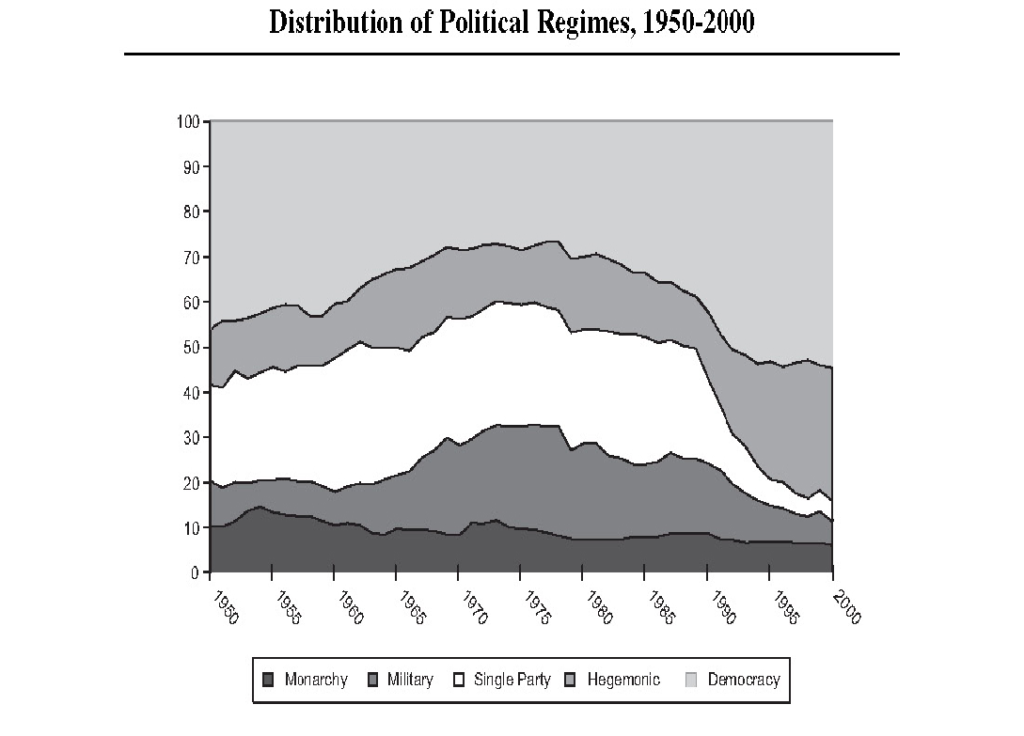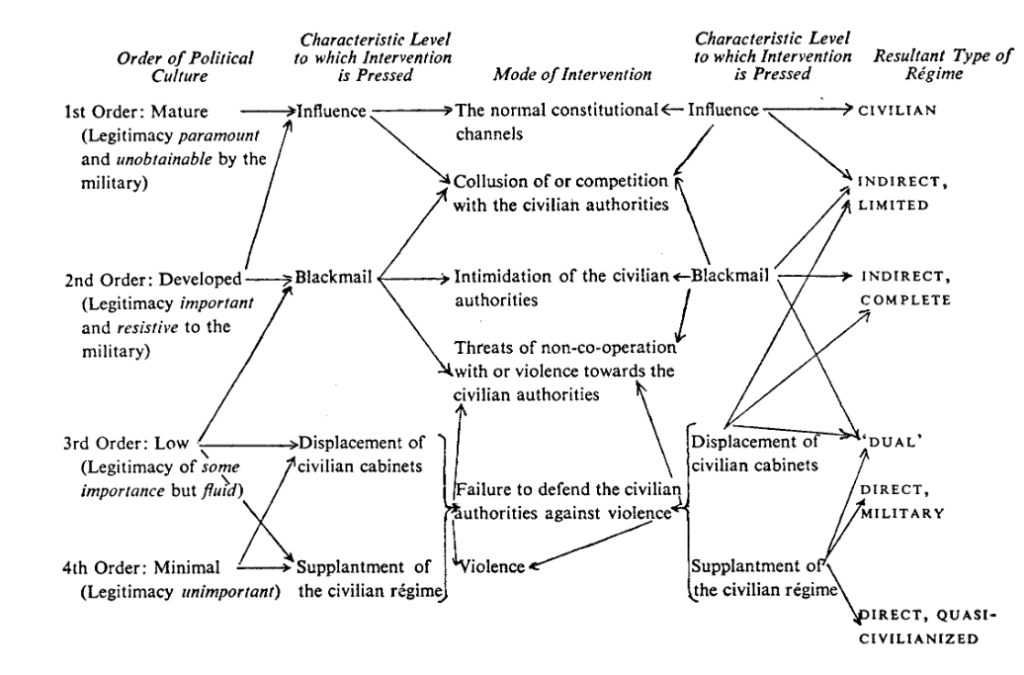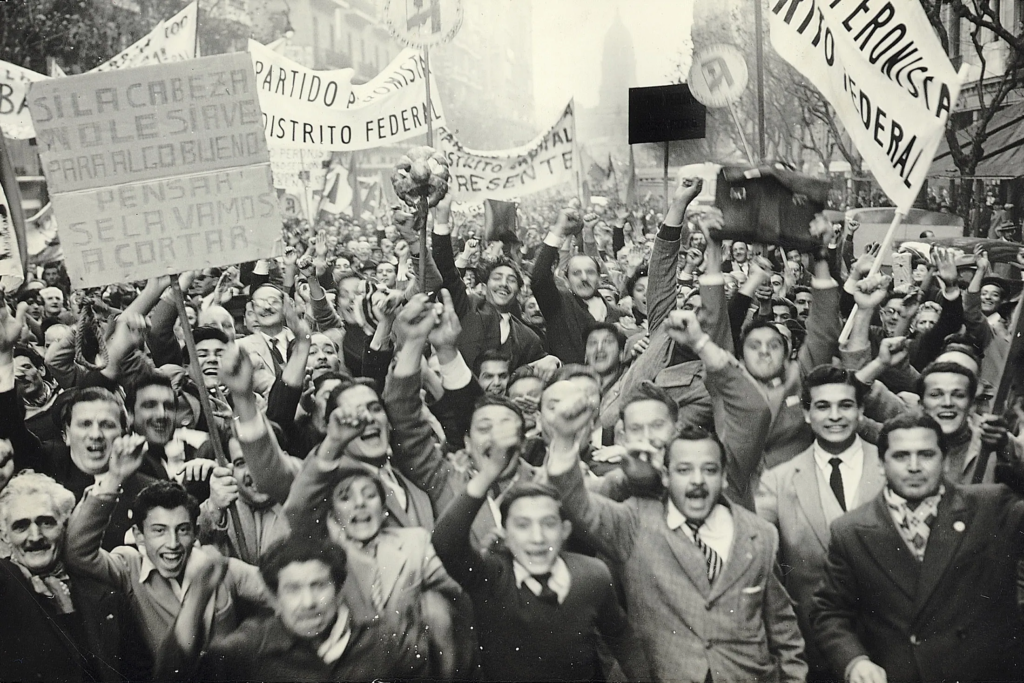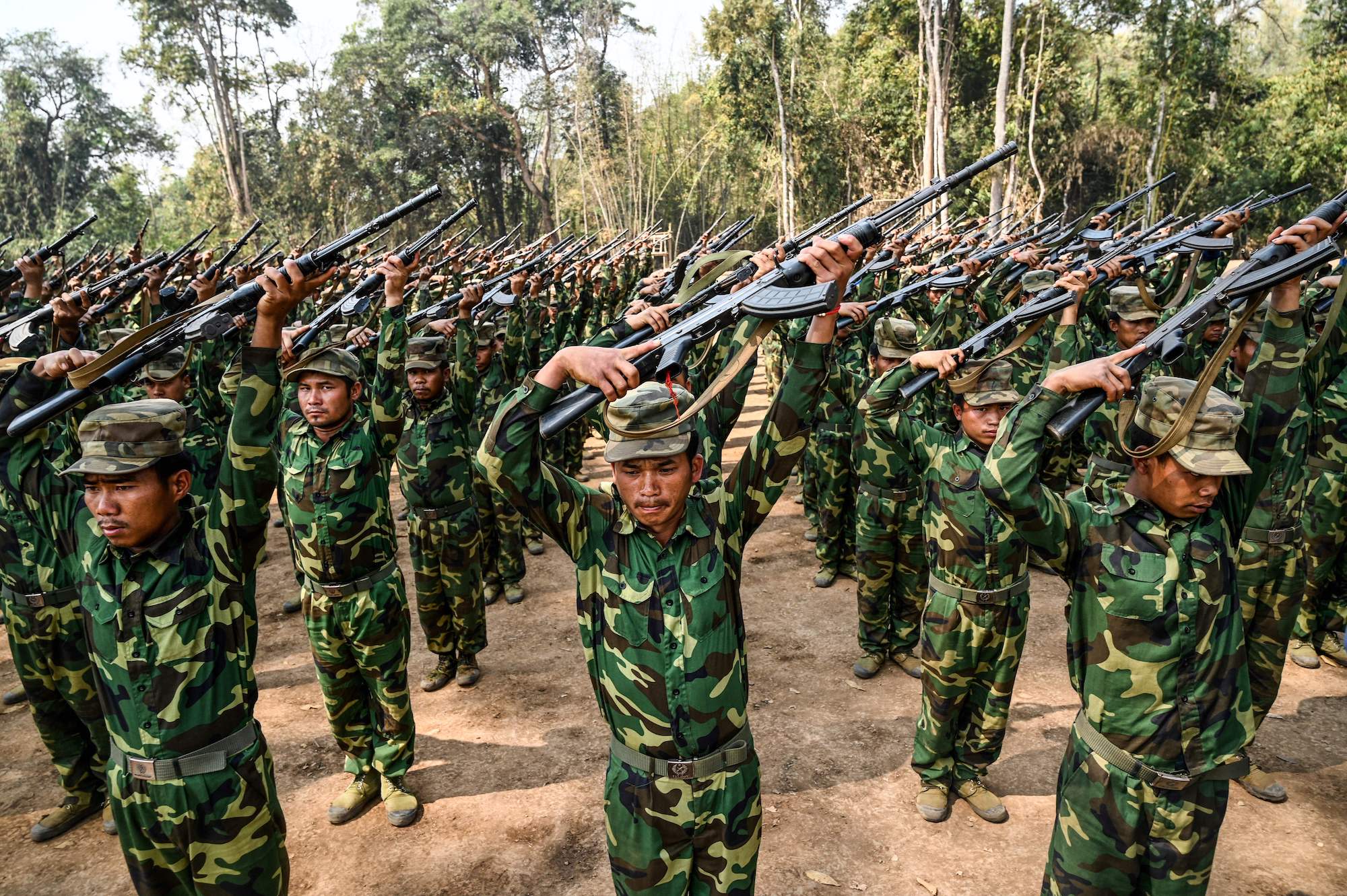Why do some military regimes consolidate following a military coup, whereas others do not?
What classifed as a military regime?
- The military has a final say on important poltical decision
- The military in charge tends to be the army (or security service), rather than the air force or the navy.
Cautious about classification:
- Regimes may have elements of military rule without being a ‘military regime’ as such (E.g. Egypt)
- ‘Praetorianism’ (derive from the Praetorian Guard in the Roman Empire): propensity of the military to intervene in politics.
- Military rule is distinct from foreign intervention and occupation by a foreign military force.
General trends: the decline of military regimes

- Military regime in recent decades have been found in all part of world (save Western Europe, North America and Australasia)
- The military has historically been relatively weak in most communist regimes
- Certain states appear to be prone to military take-overs: Thailand, Nigeria
- Military rule has become less common during the past two decades, however, the military still govern 19% of the world’s countries in the first decade of twenty-first century.
- Between the end of the WWII and the onset of the 1970s to 1990s wave of democratisation, the military had interviened in approxinately two-thirds of these countries
The military as an institution: comparison with parties
- Like parties:
- Hierachical
- Clear career path
- Systematic recruitment process
- Good at implementing decisions
- Differences:
- Good at coercion (parties do carrots better, militaries do stick better)
- Not as integrated into society as parties
Integration with civilian institutions
- More commonly, the military exercises power indirectly or in conjunction with representative institutions.
- Military leaders are in direct charge of government, and are no functioning representative bodies.
- Some military regime hold elections, and some allow multiparty political systems to function.
Finer’s five types of military rule (from The Man on Horseback)
- Indirect – Limited (Interwar Japan)
- Indirect – Complete (Cuba under Bastista)
- Dual (Poland under General Jaruzelski in the 1980s)
- Direct (Turkey 1960 – 1961)
- Direct – quasi-civilianised (Egypt under Nasser)
Finer argued that the military’s intervention in politics, such as when a miliary coup overthrows the civilian government, is best explained by examing both subjective and objective factors. What he termed the disposition an the opportunity to intervene in politics. (Calculus of Intervention) It is derived by combining the two variables, disposition and opportunity for analysising military intervention provides a comprehensive check-list that will take all factors into account.
Four motives to seize power:
- National interest
- military’s veiw of its political duties as custodian of the national interest may take the form of either an arbitrating role or a more ambitious role as the ruler of the country and implementor of a sometimes comprehensive policy programme.
- There is no uniform notion of what constitutes the ‘national interest’. Military regimes can differ in their conceptions of national interest (left-wing or right-wing).
- Left-wing example: Several purportedly Marxist-Leninist military regimes arose in Africa in the 1960s to 1970s, such as in Ethiopia and Somalia, while the Burmese military regime persued in 1962 to 1988 a ‘Burmese way to socialism’ that was no less radical than the socialist practicice of most Marxist-Leninist military regimes.
- Right-wing example: Usually are ‘revolution from above’, which destroy the political and economic base of aristocracy and upper class by allying with rising capitalist or landed class rother than mobilising the working class and the peasantry.
- ‘Kemal Atakurk in Turkey
- Nasser in Egypt
- Velasco in Peru
- individual self-interest
- ‘National interest is only the disguise for your individual interest’.
- Officer corps desire for better pay, easier promotion, opportunity for lucrative job in civilian organisations.
- ‘The distinction between corporate and individual interest’
- For corporate: it is about interest you get from professional role as soldiers. Protecting the professional autonomy and monopoly.
- For individual: it is about your personal aspiration
- ‘National interest is only the disguise for your individual interest’.
- corporate self-interest
- Nordlinger emphasising that ‘the great majority of coups are motivated by the defense or enhancement of the military’s corporate interests’. However, Thompson’s research into ‘coup-makers’ greivances did not support this, as corporate interest is missing in more than half of 1946-70 coups. Evidence was that there is an indifference of size and expenditure of corporate welfare between the miltary and non-military government.
- Military has strong corporate concerns that may overshadow its social self-interested motives for seiziing power.
- Officer with a corporate professional group are more detached from its wider social group.
- Therefore, the wider social class of the officer corps are less important than the narrower corporate interests that arises form the ‘selective induction, professional training and social code, along with the organisational and often the social self-sufficiency of the military establishment’.
- social self-interest (class, ethnic and religious)
- Social self-interest means the officer’s concern for the interests of the particular social group to which it belong.
Cost and Risk of Sezing Power:
- If the coup fails, corporate and individual fears, not only will the individual officers face drastic redistribution but also the military as an organisation may face serious repercusions, as when a failed coup in Cotsta Rica in 1948 led to the army’s being replaced by a police force.
- If coup successes, politicisation of the military seriously undermines its corporate cohesion and military effectiveness; military losing its fighting power.
- ‘Vast majority’ of coup is a new military regime replacing the old one.
Political Strengths of the Military: (from the man on the houseback)
- Modern armies are cohesive and hierarchical:
- Some armies of the past consisted only a multitude of man independent of one another and maintaing little contact between themselves.
- Others have not been hierarchical, but almost republican in their relations to their chiefs,
- Quote:
- “The Spartan host and the Cossack settlements were cohesive enough, but republican as to command.
- The Voortrekkers and the American frontiersmen were neither cohesive nor hierarchical formations.”
- The army is a purposive instrument. It is not a crescive institution like the church which emerge unconciously from society. Army comes into being by fiat. Army’s primary purpose is to win wars. It has several features:
- centralised comand (A chain of commands always ends up at the supreme commander)
- hireachy (Pyramid Structure of authority)
- discipline (hard leave this big corporation, non-consent departure is desertion)
- intercommunication
- isolation and self-sufficiency
- The above features of army make it more organised than civilian bodies
Political Weakness of the Military:
- Three major weakness:
- Technical inability to administer any but the most primative community.
- For most military regime, not all cabinet members are soldiers
- E.g: In Iraq, March 1961 only 7 out of 16 carbinet member are soldiers
- The more primative the economy, the easier it is for military to adminster it by pureluy military man and measures
- Modern military are well equied with their own separate and self-contained system of engineering, provisioning, supply, engineering, communications, even of education.
- The primative civil society are less technically equipped. For instance, for a civil society that still in the state of subsistence farming, military regimes grants them law and order, communication, education and social development.
- For most military regime, not all cabinet members are soldiers
- Successful only in repairing material breakdowns, and incompotent in fields such as denazification, political revival and re-education, as ‘problems of securities, sanitation and restoration of public utilities faded into the background’.
- There is a ‘capped limit’ of the economy of the military regime.
- As economy advances, as division of labour become more and more extensive.
- As the secondary and tertiary service expand, the requirement for a trained professiinal bureaucracy, of technicians, labour organisations is unable be met under the rule of the military regime.
- Technical inability to administer any but the most primative community.
Means of Military Intervention
- Disguised coup, instead of actually starting a coup, the military can achieve the same effect by threatening to stage a coup.
- This is an implict process. ‘Blackmailing’ is more effective when the miltary can credibly threaten the incumbent government. It means the military is capable and can deliver the coup as it has threatened.
- e.g.: The 1966 ‘disguised coup’ in Indonesia, (which saw the president confer sweeping governmental power upon army commander Genral Suharto) involved the deployment of soldiers outside the presidential palace – and the military has always maintained that it does not exert any pressure on the President.
- Two method of starting a coup:
- ‘barracks coup‘, in which a single barracks or unit revolts against the government in the expectation that other units will join it in a march on the capital or in other forms of pressure that will topple the government.
- ‘decapitation coup‘, in which the aim is replacing the head of the state.
- Two types of a coup:
- ‘Corporate‘ coup, in which the military acts as a unified, corporate body; Higher chances of successes compares to Fractional coup, as fractional coup may face opposition from other section of military. Therefore, corporate coup has more power against civilian opposition.
- ‘Fractional’ coup, in which only a part of the military attemps to stage a coup. Often a fractional coup is aimed at the military’s corporate/professional leader (replacing highest-ranking command officers or civilian government head). Usually, lead by middle-ranking officers.
- Janowitz identified the factional coup as a symptom of the weaknesses in a military’s internal social cohesion which reduce its capacity to intervene effectively in politics. A lack of internal cohesion lead to coups being attempted by part of the military.
The results of military intervention:


- Indirect Rule: Norminally a civilian government rules and takes constitutional responsibility. This is usually done by blackmailing or displacement (which presupposes one civilian government being changed for another)
- Limited Indirect Rule:
- Inter-War Germany and Japan
- The military exerts partial influence over the civilian government but does not control it entirely.Civilian leaders retain some autonomy in policymaking, especially in non-military matters.The military may act as a guardian of certain state interests, stepping in during crises but not dominating daily governance.
- There are existing developed political cultures. The respect for forms and attachment to institutions was strong enough to prevent the military attempting to establisg anything but indirect form of rule.
- The Germany and Japan is Second Order States, Argentina is a Third Order State
- Complete Indirect Rule:
- Cuba under Batista (1933–1940)
- The military hold total de facto control over the government while maintaining a civilian facade.
- Civilian leaders (e.g., Presidents, Prime Ministers) are mere figureheads, with little to no independent authority.The military can appoint, remove, or manipulate civilian leaders at will.
- There existed a fragile and underdeveloped political culture, with weak institutional checks on military power. Batista exploited this weakness by ruling indirectly through a succession of puppet Presidents while maintaining de facto control over the government.
- Cuba during this period can be classified as a Third Order State, similar to Argentina, where weak political institutions allowed the military to dominate governance through indirect-complete rule.
- Limited Indirect Rule:

- Dual Rule:
- The leader simultaneouly control both military and civilian institutions, balancing these to maintain power.
- Perón’s Argentina: Juan Perón was both the de facto and de jure leader of the armed forces and the head of the Peronista movement. He could override party decisions, control candidate selections, and dictate political agendas.
- Franco’s Spain: Francisco Franco was Head of State, Prime Minister, head of the armed forces, and leader of the Falange (F.E.T.). He balanced influence between the military, Falange, the Church, and monarchist forces.
- Stability and Legitimacy
- Perón: Maintained stability by controlling both pillars of power but faced collapse when unable to balance them.
- Franco: Sustained rule by strategically navigating and exploiting civilian and military alliances.
- Adaptation to Political Circumstances
- Perón: Shifted policies between pro-labor and pro-military depending on political survival. Following Evita’s death and economic decline, he leaned on military support.
- Franco: Used the fluctuating strength of the Falange and monarchist sentiment to balance power. Adjusted alliances to maintain authority amid changing political conditions.
- Balancing Civilian and Military Power
- Perón: Manipulated military and civilian sectors, using public support (e.g., descamisados) to counter military threats. Shifted military funding based on political needs—reduced the army budget in his first term but courted the military in his second term as economic struggles grew.
- Franco: Managed power dynamics by playing the weakened Falange against the Church and military. The Falange controlled labor syndicates, providing civilian legitimacy, while Franco retained military dominance.
- Direct Rule
- Quasi-civialianized Direct Rule:
- The military assumes full and overt control of the government, dissolving civilian institutions and ruling without pretense of civilian participation. Civil liberties are often suspended, political parties are banned, and governance is carried out by military councils or juntas.
- Turkey (1960–1961): The Turkish military ousted the civilian government in a coup and directly governed through the National Unity Committee (NUC). Political parties were dissolved, the constitution was suspended, and former leaders were tried and executed. The military drafted a new constitution and held elections in 1961, after which power was transferred back to civilian authorities.
- Direct Rule:
- The military retains actual power but introduces superficial civilian institutions to legitimize its rule. Political processes exist but are tightly controlled, and opposition is suppressed. Civilian leadership serves as a facade while military figures dominate behind the scenes.
- Egypt under Nasser (1952–1956): After consolidating power, Gamal Abdel Nasser transitioned Egypt from direct military rule to a quasi-civilian government. A new constitution in 1956 established a strong presidency with Nasser at its head and a weak, elected assembly. The National Union was the only legal political party, and the press was fully nationalized. Although the government appeared civilianized, real authority remained with Nasser and his military allies.
- Quasi-civialianized Direct Rule:
What factors prevent military for sezing power (Negative opportunities)?
- Legitmacy Factor:
- Societies with a mature or developed political culture could be expected to reject or resist any claims that military rule was legitmated and to strongly resist military intervention.
- Moral condemnation of illegitmate military intervention in politics is expressed in direct action, such as ‘mass protests, general strike, riots, sporadic violence’
- The absence of civilian authorities substantially increases the military’s opportunity to seize power.
- Political and Operational factors:
- Increased opportunity when
- civilian authority are highly dependent upon the military. It happens when the civilian authority use the military for internal security.
- civilian authority are economically depressed. For instance, instablility in export prices, as it generate discontent on the incumbent government for economic turbulance.
- Decreased opportnity when:
- Negative Opportunity factors
- The recent independence of the state
- Lack of any previous coup
- Negative Operation factor:
- Presence of foreign troops
- Negative Opportunity factors
- Increased opportunity when
- Other strategies:
- Use family member to hold key military posts
- Use ‘Spy and intellegent units’
Indirect Rule:
Civilians government is only a puppy or agent of the military, could well be classified as military dictatorship.
- The military’s support for a civilian’s president’s autoglope (self-coup), and for his resulting dictatorship can be viewed as the military’s seizure of power.
- President misuse the public power to:
- extend his decree powers and remove the law-making powers enbodied in the congress or parliament (Talking about that Korean president)
- remove the constitutional prohibition on his serving a second term and /or ensure that he will be re-elected.
How do military regime maintain and reproduce power?
Maintaining power:
- asserting authority
- ccompelling obedience
- resisting threats
Reproducing power:
- Recruitng and socialising new members of the ruling elite
- managing leadership succession
Why military taking power is a bad idea?
- MIlitaries are designed to fight, not to rule
- The military often has little appetite for rule
- MIlitary rule is difficult to legitimate
How do military regime legitimise power?
- External threat perception manipulated
- Defence against threats to democracy from communisim, Islam, insurgency, etc
- Anti-corruption drive – Law and order
Why military regime takes power?
- MIlitary can be used as a vehicle of control
- Protect its direct interest from threats
- Intervene when there is a perception that the ‘national interest’ is threatened
- The military in some cases take control when democratic governments are perceived as weak or corrupt.
- Militaries typically take power temporaily
How does the military take power?
- Coups d’ etats (palace coups, martial law, force)
- Juntas (Collegial or non-collegial)
- Partial civilianisation (elections, parliaments, parties, experts)
- Exit
Maintaining power: Strength
- Organisation/institutionalisation
- Discipline
- Coercive power
Maintaining power: Weakness
- Lack of legitmacy
- Lack of longevity
- Lack of skills
Reproducing power: Challenges
- Lack of mechanism for leadership turnover
- Fractionalism often arises in military regimes that have been in power for an extended time (e.g: Brazil 1960s – 1980s)
- Elements of personalism often in practice determine succession
- Factionalism and personalism can weaken the regime
Exiting power: Strategies
- Reason: By choice or force (counter-coup)
- Pace:
- Abruptly – Argentina 1983 and Greece 1974
- Slowly – Brazil 1974 – 1990s
- Reserve powers (e.g. Pinochet in Chile, Turkish generals)
Case study 1: Myanmar
Background:
- Created under British colonial rule in 1866 from ethnically diverse territories
- Attained independence in 1947 and has experienced several armed rebellions by separatist groups
- Unrest has provided an excuse for military clampdowns
- For over 20 years, Myanmar has had a military regime, modified in 2010, again since 2021
Military Regime History:
- The Myanmar military regime consists of a council of generals that have been power since a military coup
- The generals announced that they would hold elections in 1990 and then step down. However, in the 1990 elections, the National League for Democracy under Aung San Suu Kyi won 60 per cent of the vote, and the generals then gradually removed powers from the assembly.in 1989.
- From the early 1990s to 2010 the generals ruled directly, before elections and indirect rule.
- Since February 2021, they have once again assumed direct rule
Why its military regime Successed?
- Unification
- Systematic process of promoting younger members of the military
- Opposition divided along ethnic lines
- The lower level of socio-economic development of the country is also a contributing factor
Reforms:
- In 2008, the generals held a referendum on a constitution, which won the support of 92% of the population.
- Elections held in 2010 are widely recognised to be undemocratic
- The competing parties included members of the military
- 25% of seats in parliament and key ministerial positions reserved for the military
Case study 2: Egypt and Chile
Background:
Egypt military attemps a fractional coup:
- The 1952 fractional coup in Egypt was aimed at the corrupt and incompetent monarchical regime and carried out by the secret ‘Free Officers’ movement of middle-ranking and junior officers within the army and air force.
- The aim of the coup is to seize control on the general headquarters and the senior commanders who were having meeting on the night of July 22th. (Unified Military Force before further actions)
- The coup also controlled the key points in the capital city, such as government building, radio stations.
- Results: The prime minister resigned, and royal palace is surrounded by the military forces, King abdicated.
Chile military attemps a corporate coup:
- The 1973 corporate coup aimed at democratically elected President Allende and his leftist supporters.
- The heads of the three armed services had agreed in writing to stage the coup on September 11th.
- The army first control he radio station and broadcast a proclamation the coup, and later deployed tank to the palace.
- President Allende refused the offer of safe passage into exile and commited suicide.
- The new, self-declared government was a military junta declared to be the supreme command of the Nation, exercising legislative power by means of numbered decree-laws, which had a decreed a ‘state of siege’ allowing summary arrest and detention.
- Thousands of civilian died.


Leave a Reply